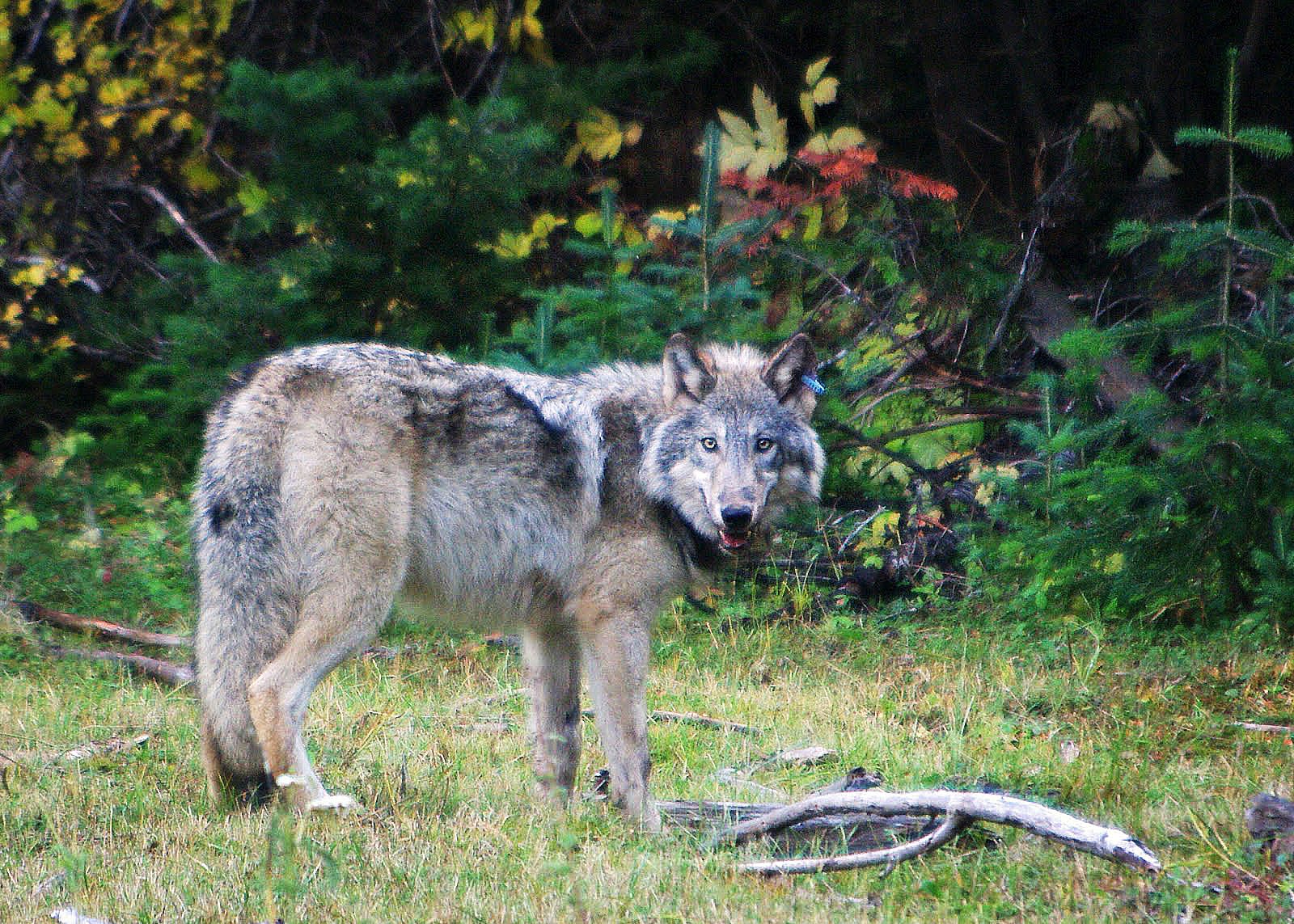Love and the Law Come to the Lone Wolf
California’s famous lone gray wolf – the first to set foot in the Golden State since his forebears were slaughtered to extinction nearly 100 years ago – has found love just across the border in Oregon, where biologists yesterday said they photographed his two pups peeking from a log.

This page was published 11 years ago. Find the latest on Earthjustice’s work.
We just found out that California’s famous lone gray wolf—the first to set foot in the Golden State since his forebears were slaughtered to extinction nearly 100 years ago—has found love just across the border in Oregon, where biologists yesterday said they photographed his two pups peeking from a log.
But, in what is a remarkable coincidence, the state that once exterminated gray wolves is now trying to protect them. On the same day that OR7 (the wolf’s name) was found with family, the California Fish and Game Commission, voted to protect wolves under the state Endangered Species Act. As reported in the Sacramento Bee, commission President Michael Sutton said:
“There is no species more iconic in the American West than this one, the gray wolf. We owe it to them to do everything we can to help them recolonize their historic range in this state.”
The commission made it clear that they are doing what they can to assure a safe and friendly place for the wolves when—and if—they ever return to California.
But, not everyone agrees with the commission. As in other states where wolf reintroductions and protections have been vociferously opposed, so too is the idea controversial in California. Ranching and hunting interests opposed the vote because they fear the wolf’s predation impact on wild game such as elk, and on cattle.
The argument echoes those made by anti-wolf forces in states such as Wyoming and Idaho, where Earthjustice has been fighting for years to protect them. State protections like those just issued in California are particularly important since the federal government has removed the gray wolf from Endangered Species Act protections.
As for more details about OR7 and his family, biologists aren’t sure who is the mother, but they are fairly confident there are more than just the two cubs spotted Wednesday. Wolves typically have litters of four to six pups.
The California Regional Office fights for the rights of all to a healthy environment regardless of where in the state they live; we fight to protect the magnificent natural spaces and wildlife found in California; and we fight to transition California to a zero-emissions future where cars, trucks, buildings, and power plants run on clean energy, not fossil fuels.